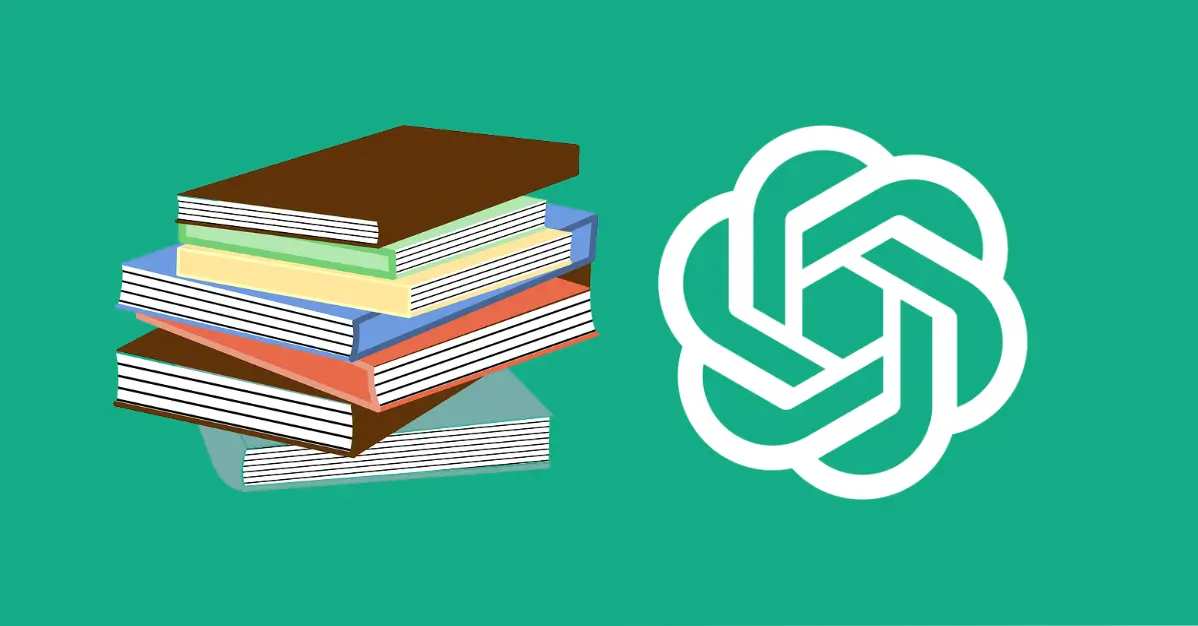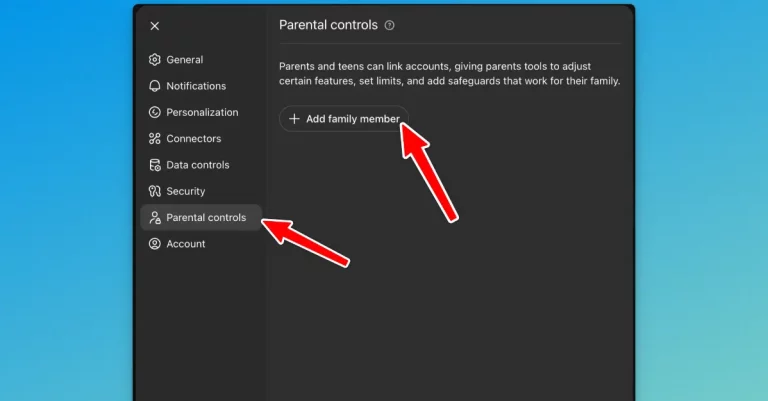15 ChatGPT Prompts for Learning Anything
Learning something new isn’t always easy. As someone who’s constantly trying to pick up new skills, I’ve found that having the right approach makes a huge difference. That’s where ChatGPT comes in.
I use ChatGPT daily to learn everything from coding to cooking, and I’ve developed a set of prompts that actually work. Not just generic questions, but specific prompts that get you useful, practical answers.
In this post, I’m sharing the 15 prompts I personally use and test. Each one serves a different purpose in the learning process, and I’ve included real examples so you can see exactly how they work.
Whether you’re learning for work, school, or just personal interest, these prompts will help you:
- Break down complex topics into manageable pieces
- Get clear, beginner-friendly explanations
- Practice what you’ve learned
- Test your understanding
- Find practical ways to use your new knowledge
I’ve kept things simple and practical. No fancy techniques – just straightforward prompts that get results. Let’s look at each one and how you can use it.
The 15 Essential Learning Prompts
Let’s look at each prompt and how you can use it. I’ve included templates you can copy-paste, plus real examples to show you what kind of responses you’ll get.
1. Understand Concepts
When you’re starting with something new, you need it explained in plain English.
Template: Explain [topic/concept] to me as if I’m a beginner, using simple terms and examples.
Example: Explain blockchain to me as if I’m a beginner, using simple terms and examples.
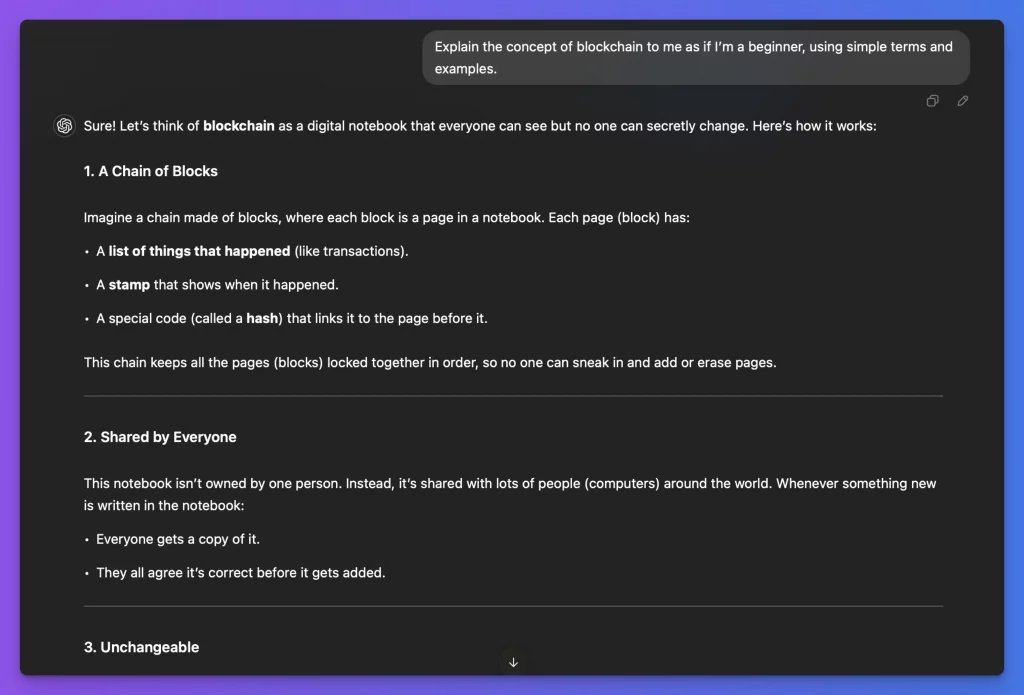
This prompt works because it tells ChatGPT to skip the jargon and focus on the basics. I used this when learning about blockchain, and instead of technical terms, I got a clear explanation using everyday examples.
2. Step-by-Step Guides
Sometimes you need a clear path forward, not just theory.
Template: Provide a step-by-step guide on how to learn [topic/skill]. Include resources I might need.
Example: Provide a step-by-step guide on how to learn Python programming. Include resources I might need.
I’ve used this prompt to create learning plans for various skills. The key is that it asks for resources – you’ll get book recommendations, online courses, and practice websites along with your roadmap.
3. Break Down Complex Topics
Big topics can feel overwhelming. This prompt helps you split them into bite-sized pieces.
Template: Simplify the concept of [complex topic] and divide it into smaller, easy-to-understand sections.
Example: Simplify quantum mechanics and divide it into smaller, easy-to-understand sections.
When I wanted to understand quantum mechanics (yes, really), this prompt helped me break it down into manageable chunks instead of trying to grasp everything at once.
4. Practical Applications
Theory is good, but you need to know how to use what you learn.
Template: How can I apply the knowledge of [topic/skill] in real life or my career?
Example: How can I apply data analysis skills in real life or my career?
This prompt gets you specific, practical ways to use your new knowledge. When I learned data analysis, this helped me find real projects I could start working on.
5. Learning Strategies
Set yourself up for success with a solid plan.
Template: Suggest an effective study plan for mastering [topic/skill] within [timeframe].
Example: Suggest an effective study plan for mastering Spanish within 3 months.
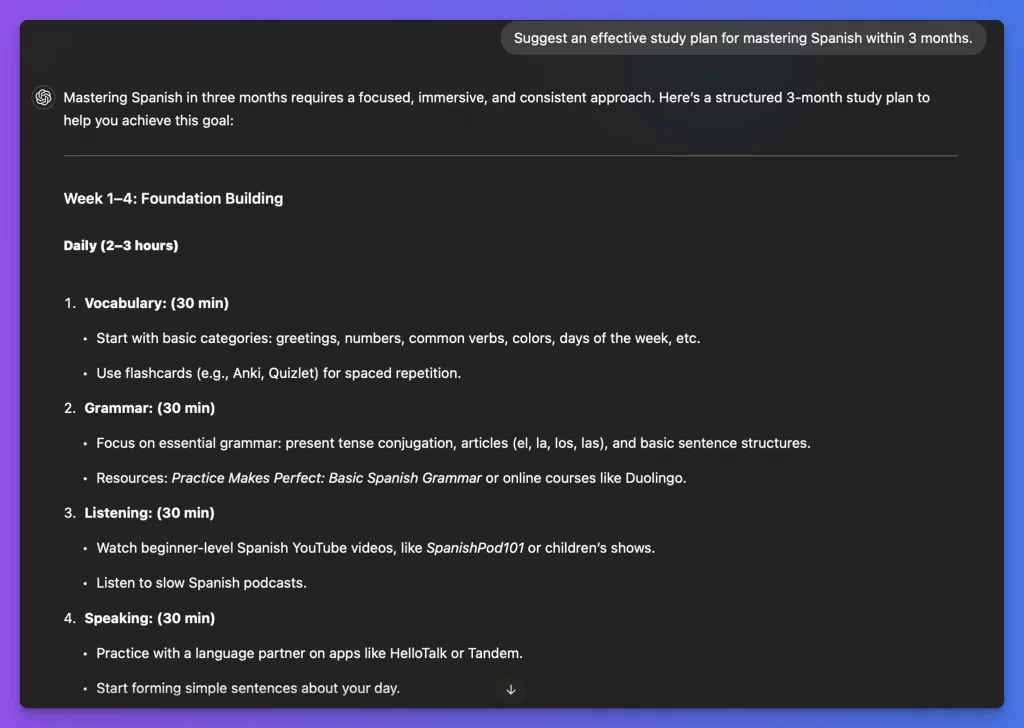
The timeframe makes this prompt powerful – you’ll get a realistic schedule that fits your goals.
6. Critical Thinking
Good questions lead to better understanding.
Template: Pose 5 thought-provoking questions about [topic/issue] to help deepen my understanding.
Example: Pose 5 thought-provoking questions about climate change to help deepen my understanding.
These questions often show you angles you hadn’t considered. I use this when I think I understand something but want to test my knowledge.
7. Comparative Analysis
Understanding how things relate helps you learn faster.
Template: Compare and contrast [Topic A] and [Topic B] to highlight their differences and similarities.
Example: Compare and contrast socialism and capitalism to highlight their differences and similarities.
This prompt helps you understand nuances and relationships between related concepts.
8. Mnemonics and Memory Aids
Sometimes you just need to remember things.
Template: Create a mnemonic or memory aid to help me remember [list of items or concept].
Example: Create a mnemonic to help me remember the order of planets in our solar system.
I use this for anything that requires memorization – it’s much easier than trying to create memorable patterns yourself.
9. Example-Based Learning
Real examples make abstract concepts concrete.
Template: Provide examples or case studies that illustrate [concept/skill] in action.
Example: Provide examples that illustrate supply and demand in action.
This prompt gets you real-world situations that show how concepts work in practice.
10. Interactive Learning
Test yourself to strengthen your understanding.
Template: Ask me questions about [topic/skill] to test my knowledge and understanding.
Example: Ask me questions about the French Revolution to test my knowledge.
This turns ChatGPT into a study partner. It’ll adjust the difficulty based on your responses.
11. Resource Recommendations
Find the best tools for learning.
Template: List the best resources, books, or online courses to learn [topic/skill]. Include both free and paid options.
Example: List the best resources to learn graphic design. Include both free and paid options.
This saves you time searching for learning materials and gives you options that fit your budget.
12. Deep-Dive Exploration
Get the full picture of a topic.
Template: Provide a detailed explanation of [topic/concept], including its history, applications, and key controversies.
Example: Provide a detailed explanation of artificial intelligence, including its history, applications, and key controversies.
This gives you context and helps you understand not just what something is, but why it matters.
13. Mistake Awareness
Learn from others’ experiences.
Template: What are common mistakes people make when learning [topic/skill], and how can I avoid them?
Example: What are common mistakes people make when learning public speaking, and how can I avoid them?
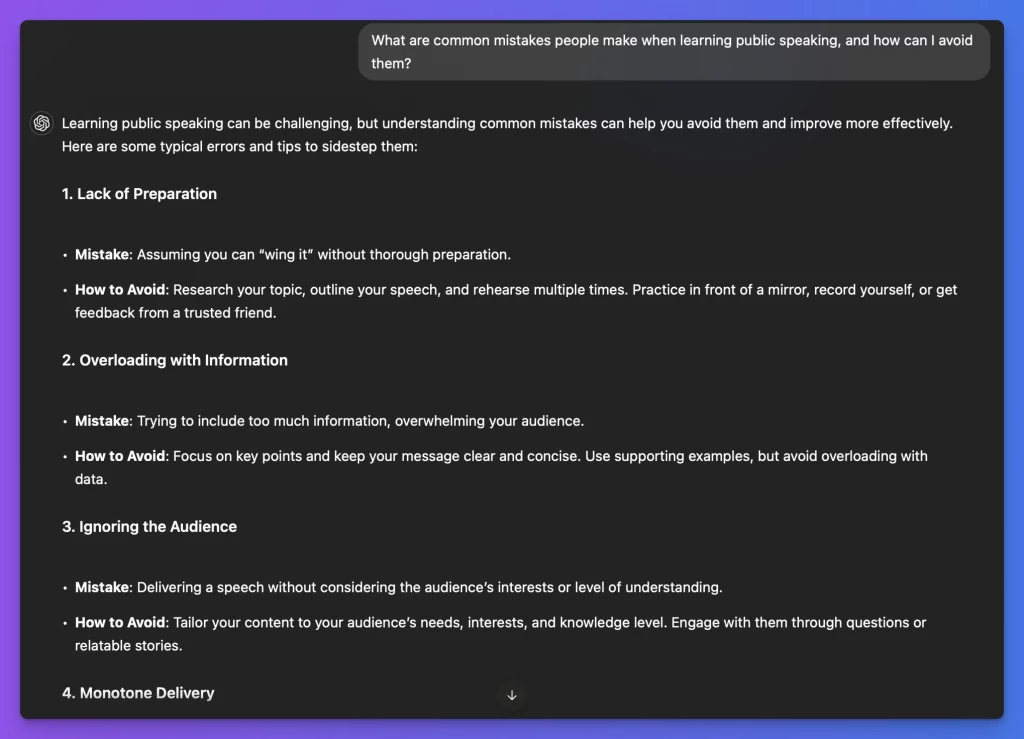
This prompt helps you skip the trial and error phase and focus on what works.
14. Real-World Problem Solving
Practice makes perfect.
Template: Give me a real-world problem related to [topic/skill] and guide me in solving it step by step.
Example: Give me a real-world problem related to budgeting and guide me in solving it step by step.
This puts your knowledge to work and shows you how to think through actual problems.
15. Learning Reinforcement
Make sure you’ve got it.
Template: Summarize [topic/concept] in 5 sentences, then give me 5 questions to test my understanding.
Example: Summarize machine learning basics in 5 sentences, then give me 5 questions to test my understanding.
This prompt helps you review and check your grasp of the material.
Using these prompts has changed how I learn new things. They’ve helped me break down complex topics, understand difficult concepts, and actually put my knowledge to use.
Feel free to modify these prompts to fit your needs. Add details, combine them, or adjust them to work better for your learning style. The key is to be specific about what you want to learn and how you want it explained.
A few final tips from my experience:
- Start with the basic understanding prompt (#1) before moving to more complex ones
- Keep a record of useful responses – you’ll want to refer back to them
- If you don’t get a helpful answer, try rephrasing your prompt
- Use the practice and testing prompts (#10, #14) regularly to reinforce what you’re learning
- Remember to fact-check important information
Learning anything new takes time and effort, but having the right tools makes a big difference. These prompts are tools – use them when you need them, adapt them as you go, and most importantly, keep learning.
